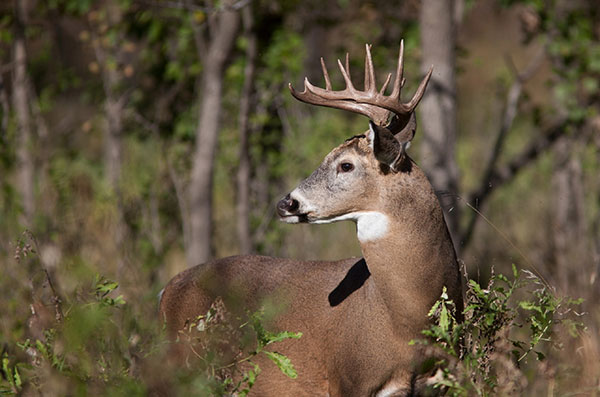(Excerpted from "Calling Whitetails: Methods, Myths and Magic," by Gary
Sefton)
 The Mechanics of Deer Calling
The Mechanics of Deer Calling
The trick to calling anything is in knowing what to say, when to say it and what it should sound like. You will need more than precise written descriptions of the actual and the artificial sounds.
Go to Google, type in 'deer vocalizations' and listen to the live deer recordings. Once you know what a vocalization should sound like, you will need an accurate device to reproduce the sounds. Different ears will hear the same sounds differently. My best advice is to listen to different grunt and bleat calls and go with the ones that sound best to your ear when compared to what you've heard on 'live' shows and tapes.
Social Curiosity Situations / Early Season Calling
Late September and early October are my favorite times to bowhunt whitetails. I look forward to my pre-season scouting trips in search of preferred food sources, and I enjoy the satisfaction and the beginning tingles of excitement I get when I find what I am looking for.
I use binoculars to scout for acorns (because they can be invisible to the naked eye), marking the heavy nut-bearing trees on a map before the season.
I always revisit the marked sites before I hang stands to make sure the trees are dropping acorns and the deer have found them. Knowing the deer are going to feed heavily at some time of the day gives me the confidence I need to stay put. Not knowing what is going to show up under the trees keeps me awake and alert.
This is also a great time to use deer calls to exploit a deer's inherent sense of curiosity about other deer. Deer are social animals. They are comfortable and secure in their matriarchal and bachelor groups, and they are curious about others of their kind, especially those of the same sex.
Knowing this gives us a small foot in the door and an opportunity to use passive social sounds to encourage deer to investigate your calling.
Doe Contact Grunts
A soft doe contact grunt is a reassuring sound to either sex. The first time they hear it they get cleaned up and fed. It also is a relaxing sound that makes an encouraging statement to all who hear it. The soft doe grunt establishes the fact that there is at least one unstressed deer in the immediate area.
Don't forget that these contact grunts are not loud or repeated often.
I use the friction call grunt to make a very soft call once or twice every 15 minutes. This sound also is short in duration. Think "urp!" and you will have the sound of the grunt.
If you make two grunts per call, the second one is for you. The deer heard you the first time. When you wait 10 or 15 minutes between calls, you hope to be calling to new arrivals in the area. It's alright to vary the time between calls. There is no real sequence, as long as you don't call too often. That would turn your calling into an unnatural sequence, and unnatural sequences make everything nervous.
You are not necessarily trying to summon a deer to your calls, you are just trying to pique its curiosity and let it know the area is safe. You're simply saying, "I'm over here and everything is alright."
Buck Contact Grunts
Soft buck contact grunts can also pique the curiosity of bachelor groups of bucks. Length and duration of the doe grunt ñ short and sweet -- is the pattern here, too; you are simply getting their attention. I don't believe they are particular about the tone as long as the sequence is natural.
You can tone down adjustable-reed grunt calls to simulate serviceable doe and young buck grunts as long as they maintain that "clicky" quality that is characteristic of all deer grunts.
Try the Knight & Hale E-Z Grunter Extreme if you are confused by the call choices. It makes excellent soft buck grunts with a minimal amount of air pressure, and it also makes decent doe bleats when you inhale on it.
Variable pitch calls are also available that allow you to change the tone of the call by twisting the barrel or pushing a button in the right place or moving an 'O' ring. If you have a variable call, find what you think is the right sound and lock it in so it will be the same every time. You have to be the judge of what sounds best to you, but this is not the time or place for the King Kong buck grunts so often seen/heard on television.
There will be a time when loud, aggressive grunts can get results, but this isn't it, It is human nature to think more and bigger is better, but that's not so with passive deer calling.
Social curiosity is the response we're trying to trigger in the early season. Deer are interested in and curious about others of their sex. In an ideal early season situation, we set up in a high deer use area close to a preferred food source or frequently traveled funnel and call sparingly.
(Gary Sefton has been teaching hunters how to call deer since 1985. He has written numerous articles and presented more than 1,000 seminars nationwide, going back to the time when he had to convince people that deer actually communicated with each other vocally. For more information on CALLING WHITETAILS and what calls to make when covering the entire length of a hunting season, go to www.targetcommbooks.com)




